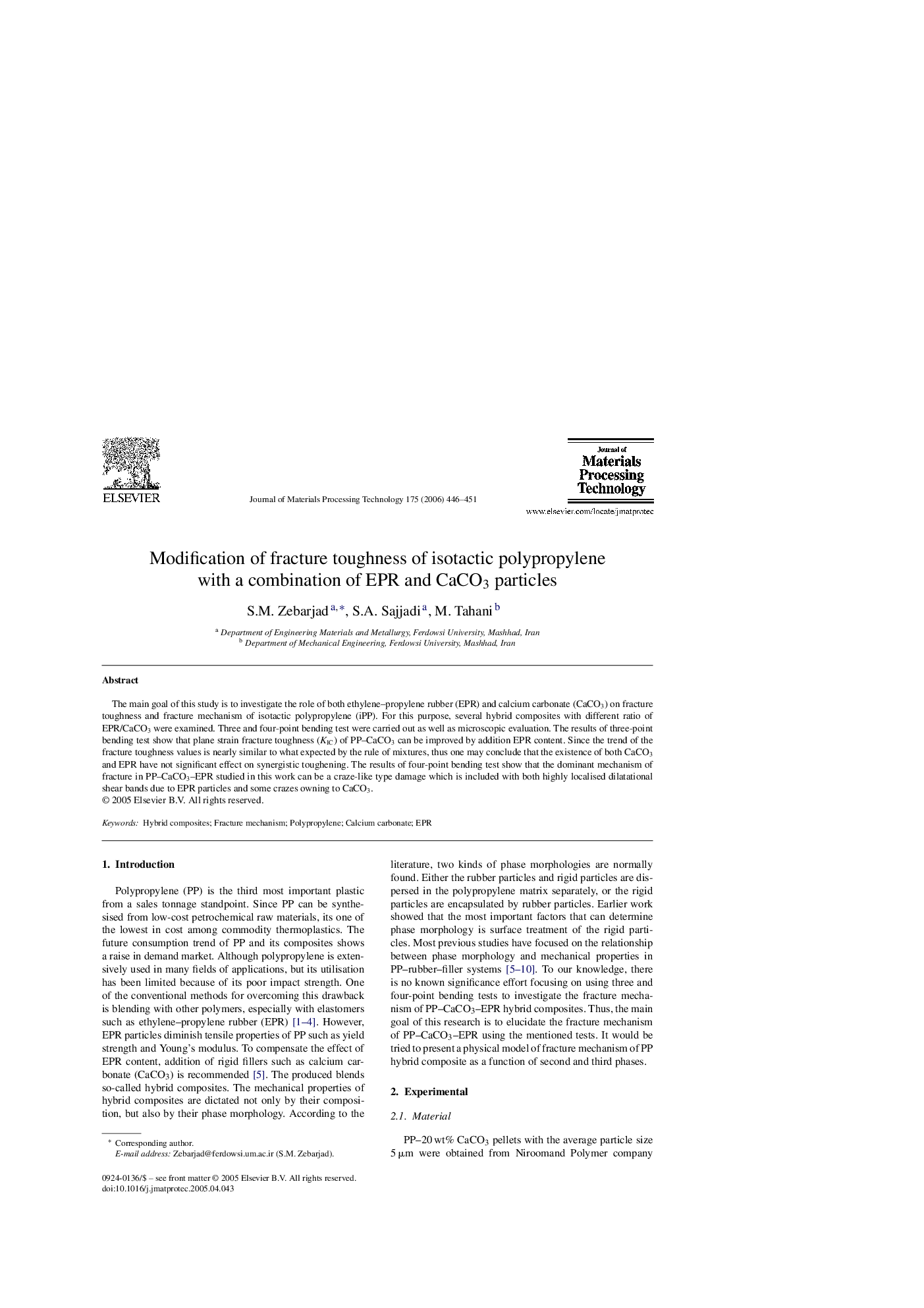| Article ID | Journal | Published Year | Pages | File Type |
|---|---|---|---|---|
| 798942 | Journal of Materials Processing Technology | 2006 | 6 Pages |
The main goal of this study is to investigate the role of both ethylene–propylene rubber (EPR) and calcium carbonate (CaCO3) on fracture toughness and fracture mechanism of isotactic polypropylene (iPP). For this purpose, several hybrid composites with different ratio of EPR/CaCO3 were examined. Three and four-point bending test were carried out as well as microscopic evaluation. The results of three-point bending test show that plane strain fracture toughness (KIC) of PP–CaCO3 can be improved by addition EPR content. Since the trend of the fracture toughness values is nearly similar to what expected by the rule of mixtures, thus one may conclude that the existence of both CaCO3 and EPR have not significant effect on synergistic toughening. The results of four-point bending test show that the dominant mechanism of fracture in PP–CaCO3–EPR studied in this work can be a craze-like type damage which is included with both highly localised dilatational shear bands due to EPR particles and some crazes owning to CaCO3.
